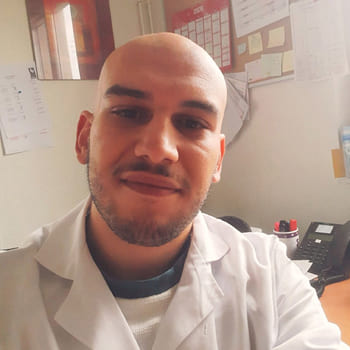
ОРОКСЕЛАМ 7,5 мг ОРАЛЬНИЙ РОЗЧИН
Запитайте лікаря про рецепт на ОРОКСЕЛАМ 7,5 мг ОРАЛЬНИЙ РОЗЧИН

Інструкція із застосування ОРОКСЕЛАМ 7,5 мг ОРАЛЬНИЙ РОЗЧИН
Введення
Опис препарату: інформація для користувача
Орокселам 2,5 мг розворювальна букальна суспензія
Орокселам 5 мг розворювальна букальна суспензія
Орокселам 7,5 мг розворювальна букальна суспензія
Орокселам 10 мг розворювальна букальна суспензія
мідазолам
Прочитайте уважно весь опис перед тим, як почати використовувати цей препарат, оскільки він містить важливу інформацію для вас.
- Збережіть цей опис, оскільки вам може знадобитися знову його прочитати.
- Якщо у вас є якісь питання, проконсультуйтеся з вашим лікарем або фармацевтом.
- Цей препарат призначений тільки для вас, і не давайте його іншим людям, навіть якщо вони мають такі самі симптоми, як у вас, оскільки це може їм нашкодити.
- Якщо ви відчуваєте побічні ефекти, проконсультуйтеся з вашим лікарем або фармацевтом, навіть якщо це побічні ефекти, які не наведені в цьому описі. Див. розділ 4.
Зміст опису
- Що таке Орокселам і для чого він використовується
- Що потрібно знати перед тим, як почати використовувати Орокселам
- Як використовувати Орокселам
- Можливі побічні ефекти
- Збереження Орокселаму
- Зміст упаковки та додаткова інформація
1. Що таке Орокселам і для чого він використовується
Орокселам розворювальна букальна суспензія містить лікарський засіб під назвою мідазолам. Мідазолам належить до групи лікарських засобів, відомих як бензодіазепіни.
Орокселам використовується для зупинки раптової та тривалої судомної кризи у немовлят від 3 місяців до дорослих.
У немовлят від 3 місяців до менш ніж 6 місяців лікування повинно проводитися лише в лікарні, де можна спостерігати за пацієнтом та мати апаратне забезпечення для реанімації.
Цей препарат повинен використовуватися лише батьками/опікунами, коли пацієнту діагностовано епілепсію.
2. Що потрібно знати перед тим, як почати використовувати Орокселам
- Не використовуйте Орокселам, якщо пацієнт має:
- алергію на мідазолам, бензодіазепіни (наприклад, дазепам) або будь-який інший компонент цього препарату (перелічені в розділі 6);
- хворобу нервів і м'язів, яка викликає м'язову слабкість (міастенія гравіс);
- серйозні труднощі з диханням у стані спокою (Орокселам може погіршити дихання);
- хворобу, яка викликає часті переривання дихання під час сну (синдром апное сну);
- серйозні проблеми з печінкою.
Попередження та застереження:
Діти:
Проконсультуйтеся з вашим лікарем або фармацевтом перед тим, як почати використовувати Орокселам, якщо пацієнт:
- Має ниркову, печінкову або серцеву хворобу;
- Має легеневу хворобу, яка викликає періодичні труднощі з диханням.
Дорослі:
Проконсультуйтеся з вашим лікарем або фармацевтом перед тим, як почати використовувати Орокселам, якщо:
- Вам більше 60 років.
- У вас є хронічна хвороба (наприклад, респіраторна недостатність, ниркова, печінкова або серцева недостатність).
- Ви ослаблені (маєте хворобу, яка викликає сильну слабкість, вичерпаність та відсутність енергії).
Цей препарат може викликати у людей забування того, що відбулося після його прийому. Пацієнтів потрібно спостерігати уважно після прийому цього препарату.
Цей препарат слід уникати у пацієнтів з історією алкоголізму або наркоманії.
Більш імовірно, що можуть трапитися потенційно смертельні випадки серед пацієнтів з труднощами з диханням або серцевими проблемами, особливо при прийомі вищої дози Орокселаму.
Діти молодші 3 місяців: Орокселам не повинен прийматися дітям молодшим 3 місяців через відсутність інформації про цю вікову групу.
Пацієнти похилого віку:
Пацієнти похилого віку більш чутливі до ефектів бензодіазепінів.
Якщо у вас є якісь питання щодо того, чи застосовується щось з вищезазначеного до пацієнта, проконсультуйтеся з вашим лікарем або фармацевтом перед тим, як приймати цей препарат.
Інші лікарські засоби та Орокселам
Повідомте вашого лікаря або фармацевта, якщо пацієнт використовує, недавно використовував або може потребувати використання будь-якого іншого лікарського засобу. Якщо у вас є якісь питання щодо лікарських засобів, які приймає пацієнт, і які можуть вплинути на використання Орокселаму, проконсультуйтеся з вашим лікарем або фармацевтом.
Це дуже важливо, оскільки використання декількох лікарських засобів одночасно може посилити або ослабити ефект лікарських засобів.
Ефекти Орокселаму можуть посилитися при прийомі наступних лікарських засобів:
- антієпілептичні препарати (для лікування епілепсії), наприклад: фенітоїн
- антібіотики, наприклад: еритроміцин, кларитроміцин
- антифунгальні препарати, наприклад: кетоконазол, вориконазол, флуконазол, ітраконазол, позаконазол
- лікарські засоби для лікування виразок, наприклад: ціметидин, ранітидин та омепразол
- лікарські засоби, використовувані для лікування артеріальної гіпертензії, наприклад: ділтіазем, верапаміл
- декоторі лікарські засоби, використовувані для лікування ВІЛ та СНІДу, наприклад: саквінавір, комбінація лопінавіру/ритонавіру
- анальгетики-наркотичні засоби (сильні знеболювальні засоби), наприклад: фентаніл
- лікарські засоби, використовувані для зниження рівня жиру в крові, наприклад: аторвастатин
- лікарські засоби, використовувані для лікування нудоти, наприклад: набілон
- гіпнотичні препарати (засоби для індукції сну)
- антідепресивні седативні препарати (засоби для лікування депресії, які викликають сонливість)
- седативні засоби (засоби для допомоги у розслабленні)
- анестетики (засоби для знеболювання)
- антігістамінні препарати (засоби для лікування алергій)
Ефекти Орокселаму можуть зменшитися при прийомі наступних лікарських засобів:
- ріфампіцин (використовується для лікування туберкульозу)
- ксантини (використовуються для лікування астми)
- троянда Святого Івана (лікарський засіб на основі рослин). Його слід уникати у пацієнтів, які приймають Орокселам.
Орокселам може посилити ефект деяких м'язових релаксантів, наприклад: баклофен (що викликає посилення сонливості). Цей препарат також може зробити деякі лікарські засоби менш ефективними, наприклад: леводопа (лікарський засіб, який використовується для лікування хвороби Паркінсона).
Проконсультуйтеся з вашим лікарем або фармацевтом, щоб отримати більше інформації про лікарські засоби, які пацієнт повинен уникати під час прийому Орокселаму.
Вживання Орокселаму з харчами та напоями
Пацієнт не повинен вживати алкоголь під час прийому Орокселаму. Алкоголь може посилити седативні ефекти цього препарату та викликати сильну сонливість.
Пацієнт не повинен вживати грейпфрутовий сік під час прийому Орокселаму. Грейпфрутовий сік може посилити седативні ефекти цього препарату та викликати сильну сонливість.
Вагітність
Якщо пацієнтка, якій призначено цей препарат, вагітна або годує грудьми, вважає, що могла завагітніти, або планує завагітніти, повинна проконсультуватися з лікарем перед тим, як використовувати цей препарат.
Прийом високих доз Орокселаму протягом останніх 3 місяців вагітності може викликати аномальний серцевий ритм у плода. Діти, народжені після прийому цього препарату під час пологів, також можуть мати труднощі з годуванням, диханням та низьким м'язовим тонусом при народженні.
Годування грудьми
Повідомте лікаря, якщо пацієнтка годує грудьми. Хоча невеликі кількості Орокселаму можуть потрапляти до грудного молока, можливо, не буде потрібно припиняти годування грудьми. Лікар порадить, чи потрібно пацієнтці годувати дитини після прийому однієї дози цього препарату.
Водіння транспортних засобів та використання машин
Орокселам може викликати у пацієнта сонливість, забування речей або порушення концентрації та координації. Це може перешкоджати виконанню завдань, які вимагають навичок, таких як водіння, їзда на велосипеді або використання машин.
Після прийому цього препарату пацієнт не повинен водити, їздити на велосипеді чи використовувати машини до повного відновлення. Спитайте у лікаря, якщо вам потрібно більше інформації.
Орокселам містить натрій
Цей препарат містить менше 1 ммоль натрію (23 мг) на одну оральну джгутик, тобто він практично не містить натрію.
3. Як використовувати Орокселам
Слідуйте точно інструкціям з прийому цього препарату, вказаним вашим лікарем. У разі сумнівів проконсультуйтеся з лікарем або фармацевтом.
Доза
Лікар призначить вам дозу Орокселаму, яка зазвичай залежить від віку пацієнта. Кожна доза має різний колір, який показано на упаковці, трубці та джгутику, який містить препарат.
У залежності від віку пацієнт отримує одну з наступних доз, у упаковці з кольоровою маркуванням:
Вікова група | Доза | Колір маркування |
3 місяці до менш ніж 1 рік | 2,5 мг | Жовтий |
1 рік до менш ніж 5 років | 5 мг | Синій |
5 років до менш ніж 10 років | 7,5 мг | Фіолетовий |
10 років до дорослих | 10 мг | Помаранчевий |
Одна оральна джгутик містить повну дозу. Не приймайте більше однієї дози.
Немовлят від 3 місяців до менш ніж 6 місяців слід лікувати лише в лікарні, де можна спостерігати за пацієнтом та мати апаратне забезпечення для реанімації.
Підготовка до прийому цього препарату
Якщо пацієнт має судомну кризу, дайте йому можливість вільно рухатися, не намагайтеся його утримувати. Перемістіть його лише у разі небезпеки, наприклад, якщо він знаходиться біля глибокої води, вогню чи гострих предметів.
Підтримайте голову пацієнта на якійсь м'якій поверхні, наприклад, на подушці або на вашому коліні. Перевірте, чи містить препарат правильну дозу для пацієнта, відповідно до його віку.
Як приймати цей препарат
Попросіть лікаря, фармацевта або медсестру показати вам, як приймати або давати цей препарат. У разі сумнівів завжди спитайте у лікаря, фармацевта або медсестри.
Інформація про те, як приймати цей препарат, також вказана на маркування джгутика.
Орокселам не слід ін'єкціювати. Не слід ставити жодної голки в джгутик.
Крок 1 | |
| Утримуйте пластикову трубку, зламайте пломбу з одного кінця та видаліть кришку. Вийміть джгутик з трубки. |
Крок 2 | |
| Видаліть прозору кришку з кінця джгутика та викиньте її безпечно. |
Крок 3 | |
| З допомогою вказівного пальця та великого пальця потягніть м'яко за щоку пацієнта та поставте ніс джгутика в задню частину простору між внутрішньою стороною щоки та нижньою губою. |
Крок 4 | |
| Поступово натисніть на поршень джгутика, поки він не зупиниться. Слід повільно ввести всю рідину в простір між щокою та нижньою губою (порожнина рота). Якщо це призначено лікарем (для великих об'ємів і/або менших пацієнтів), можна повільно ввести приблизно половину дози з одного боку рота, а потім іншу половину з іншого боку рота пацієнта. |
Коли викликати швидку допомогу
Завжди слідуйте рекомендаціям щодо лікування, наданим лікарем пацієнта або так, як вказав медичний працівник. У разі сумнівів зверніться за медичною допомогою у разі:
- Судомна криза не припиняється протягом 10 хвилин.
- Ви не можете ввити вміст джгутика або вилили частину його.
- Дихання пацієнта сповільнюється або зупиняється (наприклад, повільне або поверхневе дихання чи сині губи).
- Ви спостерігаєте ознаки інфаркту міокарда, які можуть включати біль у грудях, що може поширюватися на шию та плечі пацієнта та розповсюджуватися на його ліву руку.
- Пацієнт блює та судомна криза не припиняється протягом 10 хвилин.
- Ви давайте пацієнтові надто багато Орокселаму та спостерігаєте ознаки передозування, які включають:
- Сонливість, втома, слабкість
- Замішання чи дезорієнтація
- Відсутність рефлексу в коліні чи реакції на щипок
- Труднощі з диханням (повільне або поверхневе дихання)
- Низький кров'яний тиск (головокружіння та відчуття непритомності)
- Кома
Збережіть джгутик, щоб показати його медичному персоналу швидкої допомоги або лікарю.
Не приймайте більше препарату, ніж призначено лікарем для пацієнта.
Якщо пацієнт блює
- Не давайте пацієнтові ще одну дозу Орокселаму.
- Якщо судомна криза не припиняється протягом 10 хвилин, викликайте швидку допомогу.
Якщо у вас є якісь інші питання щодо використання цього препарату, проконсультуйтеся з лікарем або фармацевтом.
4. Можливі побічні ефекти
Як і всі лікарські засоби, цей препарат може викликати побічні ефекти, хоча не всі люди їх відчувають.
Серйозні побічні ефекти
Зверніться за медичною допомогою негайно або викликайте швидку допомогу, якщо пацієнт відчуває наступні побічні ефекти:
- Серйозні труднощі з диханням, наприклад: повільне або поверхневе дихання чи сині губи. У дуже рідкісних випадках дихання може зупинитися.
- Інфаркт міокарда. Ознаки можуть включати біль у грудях, що може поширюватися на шию та плечі пацієнта та розповсюджуватися на його ліву руку.
- Отек обличчя, губ, язика або горла, який утруднює ковтання чи дихання, або бліда шкіра, слабкий та швидкий пульс, або відчуття втрати свідомості. Можливо, ви маєте серйозну алергічну реакцію.
Інші побічні ефекти
Якщо пацієнт відчуває будь-який побічний ефект, проконсультуйтеся з лікарем, фармацевтом або медсестрою, навіть якщо це побічні ефекти, які не наведені в цьому описі.
Часті побічні ефекти (можуть впливати до 1 особи з 10):
- Відчуття нудоти та блювання.
- Сонливість або зниження свідомості
Рідкісні побічні ефекти (можуть впливати до 1 особи з 100):
- Висип, кропив'янка (алергічні висипи), свербіж
Дуже рідкісні побічні ефекти (можуть впливати до 1 особи з 10 000):
- Агітація, неспокій, ворожість, гнів чи агресія, збудження, замішання, ейфорія (надмірне відчуття радості чи збудження) чи галюцинації (бачення та, можливо, чуття речей, які насправді не відбуваються)
- М'язові спазми та тремор м'язів (тремор м'язів, який не можна контролювати)
- Зниження рівня свідомості
- Головний біль
- Головокружіння
- Труднощі з координацією м'язів
- Судомні кризи (конвульсії)
- Транзиторна втрата пам'яті. Тривалість залежить від кількості прийнятого Орокселаму.
- Низький кров'яний тиск, повільна серцева частота чи червоність обличчя та шиї (еритема)
- Ларингоспазм (скорочення голосових зв'язок, яке викликає труднощі з диханням та шум при диханні)
- Запор
- Сухість у роті
- Втома
- Ікота
Звіт про побічні ефекти
Якщо ви відчуваєте будь-який побічний ефект, проконсультуйтеся з лікарем, фармацевтом або медсестрою, навіть якщо це побічні ефекти, які не наведені в цьому описі. Також ви можете повідомити про них безпосередньо через Sistema Español de Farmacovigilancia de Medicamentos de Uso Humano: www.notificaram.es. Надсилаючи звіти про побічні ефекти, ви можете допомогти надати більше інформації про безпеку цього препарату.
5. Збереження Орокселаму
Тримайте цей препарат поза зоною досяжності дітей.
Не використовуйте цей препарат після закінчення терміну придатності, вказаного на упаковці та маркування джгутика, після CAD. Термін придатності - останній день місяця, вказаного.
Тримайте при температурі нижче 30 °C
Тримайте джгутик для орального використання в пластиковій трубці-протекторі.
Не використовуйте цей препарат, якщо упаковка відкрита або пошкоджена.
Е
Лікарські засоби не слід викидати у водопровід чи сміття. Відкладайте упаковки та лікарські засоби, які вам не потрібні, у пункті збору SIGRE в аптеці. Спитайте у фармацевта, як позбутися упаковок та лікарських засобів, які вам не потрібні. Таким чином, ви допоможете захистити довкілля.
6. Зміст упаковки та додаткова інформація
Склад орокселаму
Активна речовина - мідазолам
- Орокселам 2,5 мг - кожна предварительно наповнена ін'єкційна сумка для перорального застосування містить мідазолам гідрохлорид, еквівалентний 2,5 мг мідазоламу в 0,5 мл розчину.
- Орокселам 5 мг - кожна предварительно наповнена ін'єкційна сумка для перорального застосування містить мідазолам гідрохлорид, еквівалентний 5 мг мідазоламу в 1 мл розчину.
- Орокселам 7,5 мг - кожна предварительно наповнена ін'єкційна сумка для перорального застосування містить мідазолам гідрохлорид, еквівалентний 7,5 мг мідазоламу в 1,5 мл розчину.
- Орокселам 10 мг - кожна предварительно наповнена ін'єкційна сумка для перорального застосування містить мідазолам гідрохлорид, еквівалентний 10 мг мідазоламу в 2 мл розчину.
Інші компоненти - хлорид натрію, очищена вода, хлоридна кислота та гідроксид натрію (для регулювання pH).
Вигляд продукту та вміст упаковки
Орокселам 2,5 мг – упаковка з жовтою етикеткою
Орокселам 5 мг – упаковка з блакитною етикеткою
Орокселам 7,5 мг – упаковка з фіолетовою етикеткою
Орокселам 10 мг – упаковка з помаранчевою етикеткою
Орокселам розворюється для перорального застосування - прозора та безбарвна рідина.
Випускається в предварительно наповнених ін'єкційних сумках для перорального застосування коричневого кольору, без голки, з поршнем та кришкою. Кожна ін'єкційна сумка для перорального застосування упаковується окремо в захисну пластикову трубку.
Орокселам випускається в коробках, які містять 2 або 4 предварительно наповнені ін'єкційні сумки для перорального застосування (однакової дози).
Можливо, що тільки деякі розміри упаковок будуть випускатися.
Власник дозволу на маркетинг та відповідальна особа за виробництво
Власник дозволу на маркетинг
Exeltis Healthcare, S.L.
Аvenida де Міралькампо, 7.
Промислова зона Міралькампо.
19200 Асукека-де-Енарес.
Гвадалахара.
Іспанія
Відповідальна особа за виробництво
Лабораторії Ліконса С.А.
Аvenida де Міралькампо, 7
19200 Асукека-де-Енарес
Гвадалахара.
Іспанія
Цей лікарський засіб дозволений в державах-членах економічної зони Європи під наступними назвами:
SE: Midazolam medical valley 2.5 мг, 5 мг, 7.5 мг, 10 мг розворюється для перорального застосування.
FI: Midazolam medical valley 2.5 мг, 5 мг, 7.5 мг, 10 мг розворюється для застосування в роті.
DE: Midazaxiro 2.5 мг, 5 мг, 7.5 мг, 10 мг розворюється для застосування в роті.
NO: Midazolam medical valley 2.5 мг, 5 мг, 7.5 мг, 10 мг розворюється для застосування в роті.
NL: Midazolam xiromed 2.5 мг, 5 мг, 7.5 мг, 10 мг розворюється для оромукозального застосування.
DK: Midazolam medical valley 2.5 мг, 5 мг, 7.5 мг, 10 мг розворюється для застосування в роті.
IS: Midazolam medical valley 2.5 мг, 5 мг, 7.5 мг, 10 мг розворюється для застосування в роті.
FR: Midazolam liconsa 2.5 мг, 5 мг, 7.5 мг, 10 мг розворюється для застосування в роті.
IE: Midazolam liconsa 2.5 мг, 5 мг, 7.5 мг, 10 мг оромукозальне розворюється.
RO: Midazolam desitin 2.5 мг, 5 мг, 7.5 мг, 10 мг розворюється для застосування в роті.
ES: Oroxelam 2,5 мг, 5 мг, 7,5 мг, 10 мг розворюється для перорального застосування
PL: Soloxelam.
IT: Oroxelam.
Дата останнього перегляду цього листка:березень 2025
Детальна інформація про цей лікарський засіб доступна на сайті Іспанського агентства лікарських засобів та медичних продуктів (AEMPS) http://www.aemps.gob.es

Скільки коштує ОРОКСЕЛАМ 7,5 мг ОРАЛЬНИЙ РОЗЧИН в Іспанії у 2025 році?
ОРОКСЕЛАМ 7,5 мг ОРАЛЬНИЙ РОЗЧИН коштує в середньому 86.8 євро у грудень, 2025 році. Ціна може змінюватися залежно від регіону, аптеки та наявності рецепта. Рекомендуємо перевіряти актуальну вартість у місцевих аптеках або через онлайн-сервіси.
- Країна реєстрації
- Середня ціна в аптеках86.8 EUR
- Діючі речовини
- Потрібен рецептТак
- Виробник
- Інформація є довідковою і не є медичною порадою. Перед прийомом будь-яких препаратів обов'язково проконсультуйтеся з лікарем. Oladoctor не несе відповідальності за медичні рішення, прийняті на основі цього контенту.
- Альтернативи до ОРОКСЕЛАМ 7,5 мг ОРАЛЬНИЙ РОЗЧИНФорма випуску: ГЕЛЬ/ПАСТА/ОРАЛЬНИЙ РОЗЧИН, 10 мг мідазоламу гідрохлоридуДіючі речовини: midazolamВиробник: Neuraxpharm Pharmaceuticals S.L.Потрібен рецептФорма випуску: ГЕЛЬ/ПАСТА/ОРАЛЬНИЙ РОЗЧИН, 2,5 мг мідазоламу гідрохлоридуДіючі речовини: midazolamВиробник: Neuraxpharm Pharmaceuticals S.L.Потрібен рецептФорма випуску: ГЕЛЬ/ПАСТА/ОРАЛЬНИЙ РОЗЧИН, 5 мг мідазоламу гідрохлоридуДіючі речовини: midazolamВиробник: Neuraxpharm Pharmaceuticals S.L.Потрібен рецепт
Аналоги ОРОКСЕЛАМ 7,5 мг ОРАЛЬНИЙ РОЗЧИН в інших країнах
Найкращі аналоги з тією самою діючою речовиною та терапевтичним ефектом.
Аналог ОРОКСЕЛАМ 7,5 мг ОРАЛЬНИЙ РОЗЧИН у Польща
Аналог ОРОКСЕЛАМ 7,5 мг ОРАЛЬНИЙ РОЗЧИН у Україна
Лікарі онлайн щодо ОРОКСЕЛАМ 7,5 мг ОРАЛЬНИЙ РОЗЧИН
Консультація щодо дозування, побічних ефектів, взаємодій, протипоказань та поновлення рецепта на ОРОКСЕЛАМ 7,5 мг ОРАЛЬНИЙ РОЗЧИН – за рішенням лікаря та згідно з місцевими правилами.













